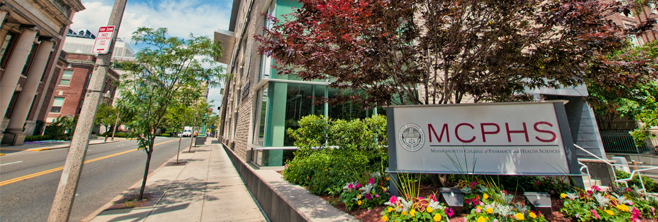Median Salary for Alumni
A new tool released by the federal government, College Scorecard, details the average earnings (and more) for attendees of nearly every college and university in the United States. The site uses students’ federal financial aid records and federal tax returns to determine their salaries ten years after they first enrolled. Data from 70 Massachusetts schools—ranging from small, private universities to larger, state-funded institutions—shows an average salary of around $49,000.
 National Trends and Surprises
National Trends and Surprises
Although the tool reveals some trends that are already well-known to many (e.g., the salary of someone who attended a medical school will likely be higher than that of someone who attended an art school), it also sheds light on some new information. Some of this information is darker than we’d like. For example, less than 50% of those who attended college ten years ago currently make more than $25,000 a year. This figure falls right around the average salary of those with only a high school diploma. We will add, however, that the site includes data for those who attended college; whether or not a person graduated (and what type of college they attended) are not considered.
Median Income for MA Alumni Above National Average
Massachusetts’ average of $49,000 is significantly higher than the national average of $34,343. MCPHS University, of Boston, is at the top of the list, with an average post-attendance salary of $116,400; MIT trails with an average of $91,600. Even those who attended Pine Manor College, which sits near the bottom of our list, make an average of $34,700 a year.
Are the Costs Actually Outweighing Benefits?
At first, the statistics in the previous section read like phenomenal news . . . and to some degree, that’s exactly what they are. Still, it may be best to take the data with a grain of salt. We should consider not only the average alumni salary, but also the average cost of attendance—a school that costs too much may not be worth its payout. College Scorecard shows that attending The Boston Conservatory, for example, can cost about $43,952 a year (after federal aid), yet after ten years, its alumni make an average of $27,500. The illustrious Harvard University, even, boasting an average alumni salary of $87,200, can cost nearly $70,000 per year to attend. Some students in MA and nationwide simply aren’t seeing the return on investment they had originally expected.
 Unequal Benefits of College Education
Unequal Benefits of College Education
As mentioned earlier, the type of degree a person pursues has a huge effect on their salary. Engineering, medical studies, and computer sciences have long been the most lucrative majors; education, human services, and the arts carry the stigma of providing lower salaries. However, these days, students enrolled in lower-paying programs are paying as much (or more than) students on the track to those higher-paying positions.
The Department of Education continues to investigate the severity of student loan debt, as it seems to spike higher and higher each year. That being said, there are tools out there to help students cope with their debt. Resources like College Scorecard will also help determine what school—if any—will be the best match for each student.
Did you attend higher education ten or more years ago? Does the data for your college or university line up? What other information would you like to see included on College Scorecard? We’d love to hear from you in the comments section below!





 1. Go empty-handed. Your hands need to be free for handing out business cards, taking down notes and phone numbers, and shaking hands. Leave your cell phone, coat, and brief case somewhere else.
1. Go empty-handed. Your hands need to be free for handing out business cards, taking down notes and phone numbers, and shaking hands. Leave your cell phone, coat, and brief case somewhere else. 2. Arrive early. The earlier you can communicate with people, the better. Keep in mind that people don’t want to talk business when that’s all they’ve been doing for the past few hours.
2. Arrive early. The earlier you can communicate with people, the better. Keep in mind that people don’t want to talk business when that’s all they’ve been doing for the past few hours. 3. Remember your business cards. There’s no reason not to have a stack of business cards on hand at a networking event. Don’t forget them.
3. Remember your business cards. There’s no reason not to have a stack of business cards on hand at a networking event. Don’t forget them. 4. Keep the name badge to your right side. Because you will likely shake hands with your right hand at all times, you want your badge to stay on that side. It will be more noticeable when you extend your hand!
4. Keep the name badge to your right side. Because you will likely shake hands with your right hand at all times, you want your badge to stay on that side. It will be more noticeable when you extend your hand! 5. Don’t stay with the same people. No matter how intense or interesting the conversation is, move on to new people every so often.
5. Don’t stay with the same people. No matter how intense or interesting the conversation is, move on to new people every so often. 6. Stay interested. Rather than spending your time answering questions, try asking them. Maintain eye contact and don’t let your eyes wander around the room during a conversation.
6. Stay interested. Rather than spending your time answering questions, try asking them. Maintain eye contact and don’t let your eyes wander around the room during a conversation. 7. Lay off the alcohol consumption. It might seem obvious, but keep the drinking to a minimum. Even though alcohol might be present at the party, you must still remember you’re making a lasting impression on many of the people there. Avoid drinking altogether, but if you must do so, alternate water or other non-alcoholic beverages between drinks.
7. Lay off the alcohol consumption. It might seem obvious, but keep the drinking to a minimum. Even though alcohol might be present at the party, you must still remember you’re making a lasting impression on many of the people there. Avoid drinking altogether, but if you must do so, alternate water or other non-alcoholic beverages between drinks. 8. Follow up! What’s the sense in going to a holiday business party if you don’t follow up? Catch up with your new connections on LinkedIn or shoot them an email within two days after the party.
8. Follow up! What’s the sense in going to a holiday business party if you don’t follow up? Catch up with your new connections on LinkedIn or shoot them an email within two days after the party.
